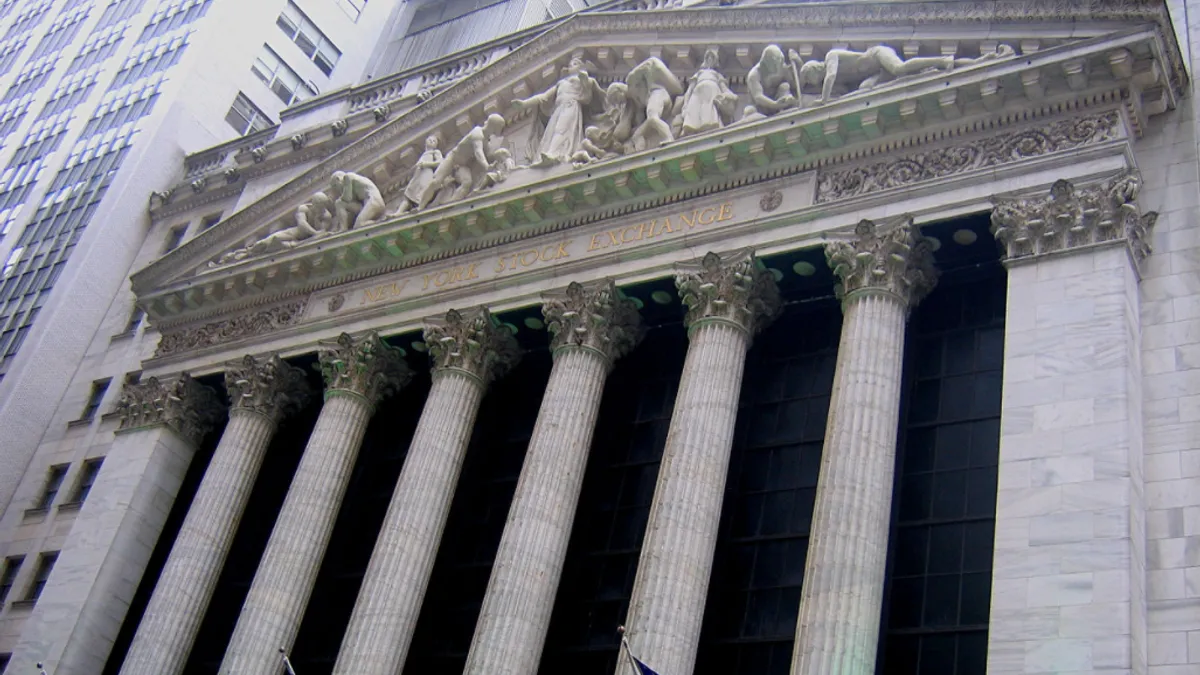Dive Brief:
- Seventy-two percent of Standard & Poor’s 500 companies have reported third quarter earnings that exceeded estimates, a lackluster result compared with the five-year average of 77%, FactSet said.
- The S&P 500 companies that have reported so far have beaten earnings-per-share estimates by 2.3% on average compared with the five-year average of 8.7%, according to FactSet. Roughly 20% of S&P 500 companies reported Q3 results as of Friday.
- Investors have reacted defensively to Q3 results and CFO calls with analysts, “rewarding positive earnings surprises less than average and punishing negative earnings surprises more than average,” according to John Butters, FactSet Senior Earnings Analyst.
Dive Insight:
CFOs and their C-suite colleagues have noted on earnings calls the headwinds to profits from high inflation, rising interest rates, wary consumers and the surge in the dollar this year.
Producer prices, or the costs of goods used to make products, rose 8.5% last month on an annual basis, as suppliers partially reversed price cuts in July and August.
U.S. exporters suffered as the U.S. Dollar Index — which tracks movement of the greenback compared with a basket of six major currencies — surged 17% this year to the highest level in two decades.
Also, Federal Reserve policymakers have signaled their intention to raise the federal funds rate by 0.75 percentage point for the fourth consecutive meeting at their Nov. 1-2 gathering. They have withdrawn stimulus this year at the most aggressive pace since the 1980s.
Recent data, combined with persistent monetary policy tightening, suggest an outlook of either weak or negative economic growth. The economy shrank 0.6% during the second quarter after slumping 1.6% during the first three months of 2022, meeting the common definition of a recession as at least two consecutive quarters of negative growth.
“We fully expect more volatility in costs, currencies and consumer dynamics as we move through the fiscal year,” Procter & Gamble CFO Andre Schulten said during an Oct. 19 call with analysts.
“Raw and packaging material costs inclusive of commodities and supplier inflation have remained high since we gave our initial outlook for the year in late July,” Schulten said, flagging an estimated “$2.4 billion after-tax headwind in fiscal 2023.”
Procter & Gamble exceeded estimated earnings for the quarter by increasing prices enough to offset declining sales. Risks to the outlook include “significant additional currency weakness, commodity cost increases, geopolitical disruption, major production stoppages or store closures,” Schulten said.
Price pressures set back Johnson & Johnson during the third quarter.
“While we were able to absorb some of the inflationary pressures this year, we are lowering our full year operating margin projection due to the impacts of inflation across most spend categories to a decline of approximately 50 basis points,” Johnson & Johnson CFO Joe Wolk told analysts on Oct. 18. A basis point is one-hundredth of a percentage point.
Adjusted income before tax as a percentage of sales fell to 33.9% from 34.5%, “primarily driven by unfavorable currency and commodity inflation impact on cost of products sold,” according to Jessica Moore, vice president of investor relations at Johnson & Johnson.
JPMorgan Chase CEO Jamie Dimon for several weeks has forecast a severe downturn but during an Oct. 14 earnings call he acknowledged a range of potential outcomes, including a slight recession.
“There’s a possibility of a mild recession — consumers are in very good shape, companies are in a very good shape,” Dimon told analysts. “And there's the possibility of something worse, mostly because of the war in Ukraine and oil price and all things like that.”
This week 165 S&P 500 companies — across a full range of industries — plan to report Q3 results, including Amazon.com, Kimberly-Clark, Ford, Bristol Myers, Shell, Mastercard and Microsoft.












